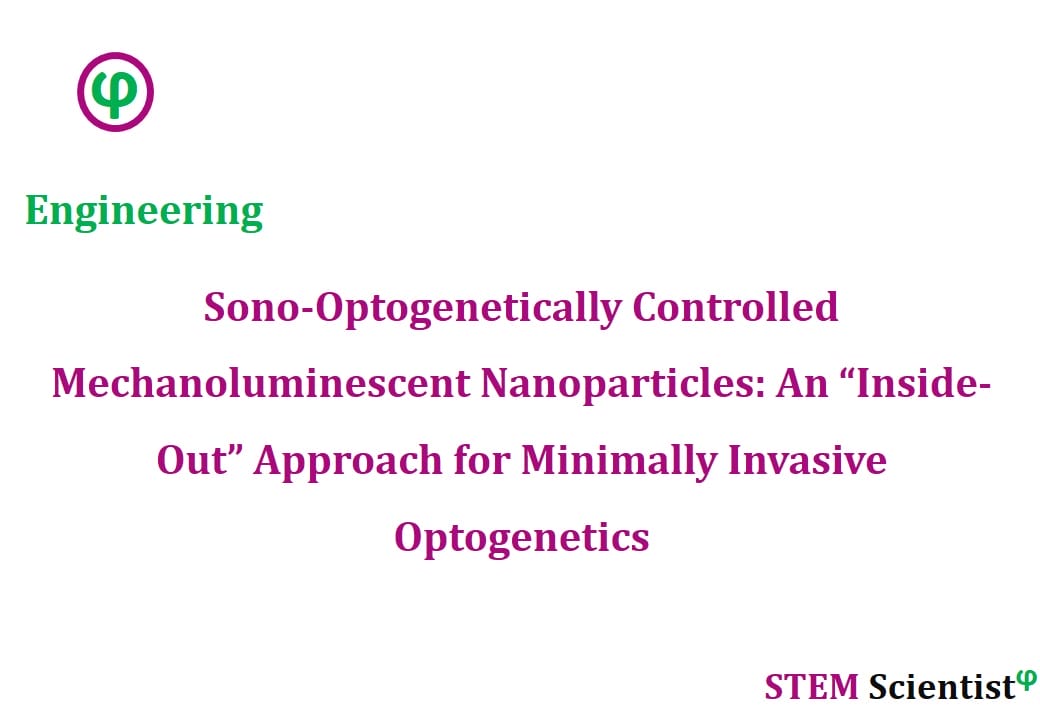
The following study was conducted by Scientists from Department of Materials Science and Engineering, Wu Tsai Neurosciences Institute, Department of Chemistry, Department of Bioengineering, Stanford University, USA.
Scientists developed unique optogenetically controlled mechanoluminescent nanoparticles that can be activated by brain-penetrant focused ultrasound source, making it an “inside-out” approach by utilization of a minimally invasive ultrasound interface.
Proceedings of the National Academy of Sciences – December 2019.
Sono-optogenetics facilitated by a circulation-delivered rechargeable light source for minimally invasive optogenetics
Abstract
Optogenetics, which uses visible light to control the cells genetically modified with light-gated ion channels, is a powerful tool for precise deconstruction of neural circuitry with neuron-subtype specificity. However, due to limited tissue penetration of visible light, invasive craniotomy and intracranial implantation of tethered optical fibers are usually required for in vivo optogenetic modulation. Here we report mechanoluminescent nanoparticles that can act as local light sources in the brain when triggered by brain-penetrant focused ultrasound (FUS) through intact scalp and skull. Mechanoluminescent nanoparticles can be delivered into the blood circulation via i.v. injection, recharged by 400-nm photoexcitation light in superficial blood vessels during circulation, and turned on by FUS to emit 470-nm light repetitively in the intact brain for optogenetic stimulation. Unlike the conventional “outside-in” approaches of optogenetics with fiber implantation, our method provides an “inside-out” approach to deliver nanoscopic light emitters via the intrinsic circulatory system and switch them on and off at any time and location of interest in the brain without extravasation through a minimally invasive ultrasound interface.
Source:
Proceedings of the National Academy of Sciences.
URL: https://www.pnas.org/content/116/52/26332
Citation:
Wu, X., X. Zhu, et al. (2019). “Sono-optogenetics facilitated by a circulation-delivered rechargeable light source for minimally invasive optogenetics.” Proceedings of the National Academy of Sciences 116(52): 26332-26342. DOI: 10.1073/pnas.1914387116.


